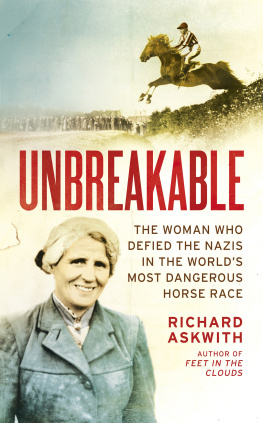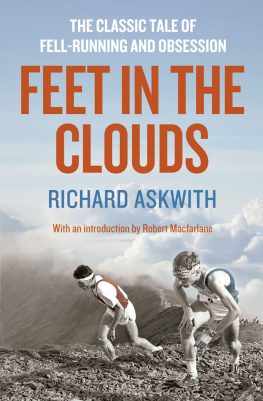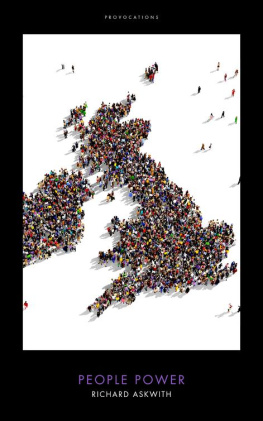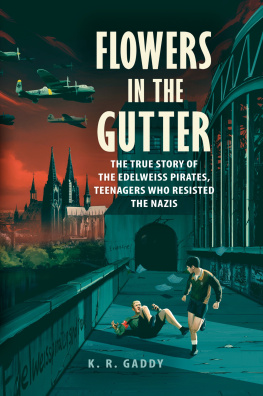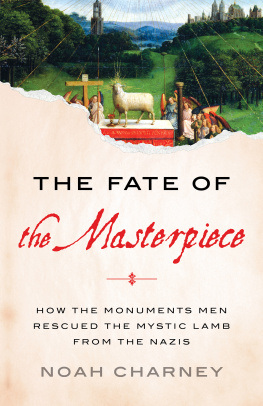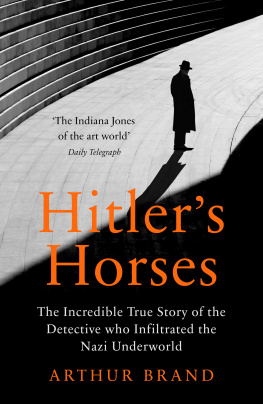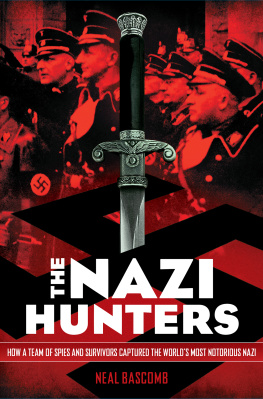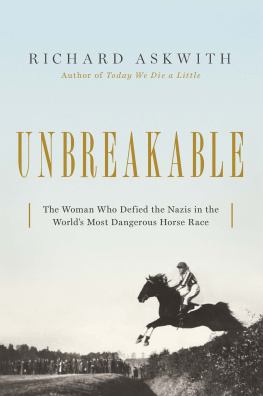

Richard Askwith
Unbreakable
The Woman who Defied the Nazis in the Worlds Most Dangerous Horse Race

Contents
About the Author
Richard Askwith has been a journalist for more than 35 years. He has written five previous books, including an evocative biography of Emil Ztopek, Today We Die A Little, which was shortlisted in the Cross Sports Book Awards. This marked his first foray into the world of Czechoslovak sport. His first book, Feet in the Clouds, won Best New Writer at the British Sports Book Awards and the Bill Rollinson Prize for Landscape and Tradition. It was also shortlisted for the William Hill and Boardman Tasker prizes. His 2014 book, Running Free, was shortlisted for the Thwaites-Wainwright Prize.
Also by richard askwith
Feet in the Clouds: A Tale of Fell-Running and Obsession Running Free: A Runners Journey Back to Nature
Today We Die a Little: Emil Ztopek, Olympic Legend to Cold War Hero
People Power: Remaking Parliament for the Populist Age
List of Illustrations
. The Brandis family in 1903
. Officers race
. itka (all Pospil archive).
. Lata on Nevsta in 1927 ( Josef Pirka, courtesy of Vychodoesk Muzeum, Pardubice)
. Lata on Norma in 1933 ( Vychodoesk Muzeum, Pardubice)
. Lata after falling with Norma in 1935 (courtesy of Vlastimil imnek)
. Lata and Norma at the water jump in 1934 (courtesy of Vlastimil imnek).
. Zdenko Radslav Kinsk (courtesy of Lenka Gotthardov)
. Hanu Kasalick (courtesy of Jan Doleal)
. Karel mejda ( Vychodoesk Muzeum, Pardubice).
. Leopold von Fugger ( Klub ptel Pardubicka)
. Hans Schmidt ( Sankt Georg)
. Oskar Lengnik ( Sankt Georg)
. Tom Masaryks funeral in Prague ( CTK).
. Lata on Norma in 1937 (courtesy of esk televise)
. Wilibald Schlagbaum ( Chicago Agency, courtesy of Vychodoesk Muzeum, Pardubice)
. Lata and Norma approaching finish line in 1937 (courtesy of esk televise)
. Lata dismounting ( Pospil archive).
. Lata and Norma being led through the crowd
. Ra, Lata and Josef Soukup (all Pospil archive).
. Lata at the ball at Ras chateau ( Pospil archive)
. Lata jumping on Otello in 1947 ( Jetich Hemsk, courtesy of Vychodoesk Muzeum, Pardubice)
. Lata and her sisters and cousin outside their cottage ( Pospil archive).
. Lata with a horse at itka
. Lata at Reiteregg in 1981 (both Pospil archive).
Every effort has been made to trace copyright holders. The publishers would be pleased to correct any inadvertent omissions or errors at the earliest possible opportunity.
1.
Old Womens Gorge
The hill falls down so steeply you can almost touch the flaking bark at the tops of the high conifers, slanting up from below. Patches of undergrowth sprout feebly from the balding earth. The dry soil is rough with trampled scraps of tree; the air, sweet with pine, is still.
We are just below the brow. The gusting April wind has vanished. So has the low moan it carried from the next valley, of traffic on its early evening rush south-west from Prague on highway No. 4.
A rusting chain-link fence, barely kept vertical by cracked concrete pillars, separates us from a tiny pebble-dash cottage that clings awkwardly to the slope. The walls are blotched with damp. The black roof tiles are newer. This is what it used to be, says the man with ash-white hair, kicking at some jagged red fragments among the dusty twigs. Asbestos.
Jan Pospil stamps out his Lucky Strike in the debris. Theyll have electricity now, he adds. And running water. They didnt then. His eyes glisten, perhaps from the smoke.
She was my favourite aunt, he explains. Well, great-aunt. There were three of them living here, three sisters. I liked Lata best. I was five or six when I first came here. She must have been about seventy. My mother would leave me here to stay for a few days. There wasnt much room: just two bedrooms. You could fit two single beds in each, and the sides touched.
Lata was strict about table manners. But she was kind. She used to send me out to play in the woods. Sometimes shed give me her gun and some ammunition, and tell me to play with that Later, in his teens, they would sneak away into the woods together and Lata would share secret cigarettes with him.
Behind us, up on the hill, a car can be seen, moving noiselessly on the lane that runs along the ridge. Back then, in the 1970s, it was more likely to be a man on a horse; sometimes more than one. The secret police liked to keep an eye on things round here.
There is no sign of the cottages current occupants, nor of any neighbours. Other dwellings are just visible through the trees, but these are recent additions. You wouldnt expect their occupants to remember Jans great-aunts. Yet the elderly sisters must have made an impression on someone. The rocky stream at the bottom of the valley is known as Bab rokle, or Old Womens Gorge. Lata would spend much of each day going up and down the hill to fetch water from a well by the stream, even though she could no longer walk without a stick.
But she never complained, says Jan. None of them did.

For a small nation, the Czechs have an extraordinary gift for producing sporting champions of luminous greatness. Still more remarkable is their rulers gift especially in the twentieth century for disowning them. Emil Ztopek, the runner; Vra slavsk, the gymnast; Olga Fikotov-Connolly, the discus thrower; Martina Navratilov, the tennis player; the near-invincible national mens ice-hockey team of 19479 All dazzled and conquered their chosen worlds, only to be denounced as traitors or enemies of the people. Some were punished; all were shunned. But none fell so far or for so long as Lata Brandisov, the steeplechase jockey, who displeased not one totalitarian regime but two having already struggled through years of prejudice on account of her gender.
In her prime, between the world wars, Jans great-aunt was fted by statesmen and socialites, acclaimed by chanting crowds. Her achievements in the saddle made headlines not just in Czechoslovakia (as it then was) but across Europe: they were astonishing in sporting terms but more astonishing still in the courage and resilience that made them possible. In an age of prejudice she refused to be constrained by convention. At a time of despair she embodied hope and patriotism. Her aristocratic glamour added to her celebrity, but she was also a figure of deep and serious significance for her nation, her sport and her gender.
She faced her ultimate challenge in middle age, confronting the warrior-athletes of the Third Reich in a sporting contest so extreme in its dangers that some would question its right to be called sport. That day alone should have been enough to earn her immortality. Instead, she was stuffed into historys dustbin.
She remained there, in that little cottage in the woods, for thirty years, forgotten and unmentionable. Her sisters would leave at dawn, walking to catch a train, to work all day in a factory on the edge of Prague. Lata, still unsteady on her feet from sporting battles gone by, would stay at home, cleaning, washing, chopping wood, fetching water, with only a dog for company.
Next page
